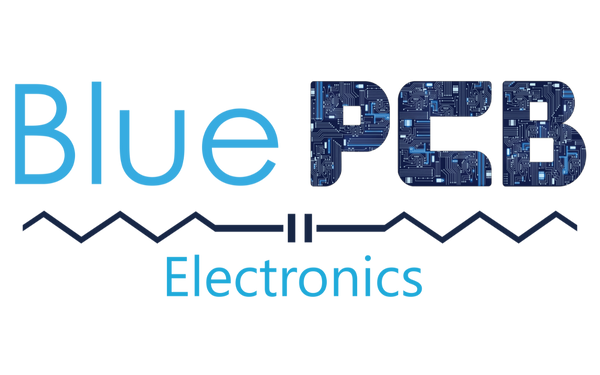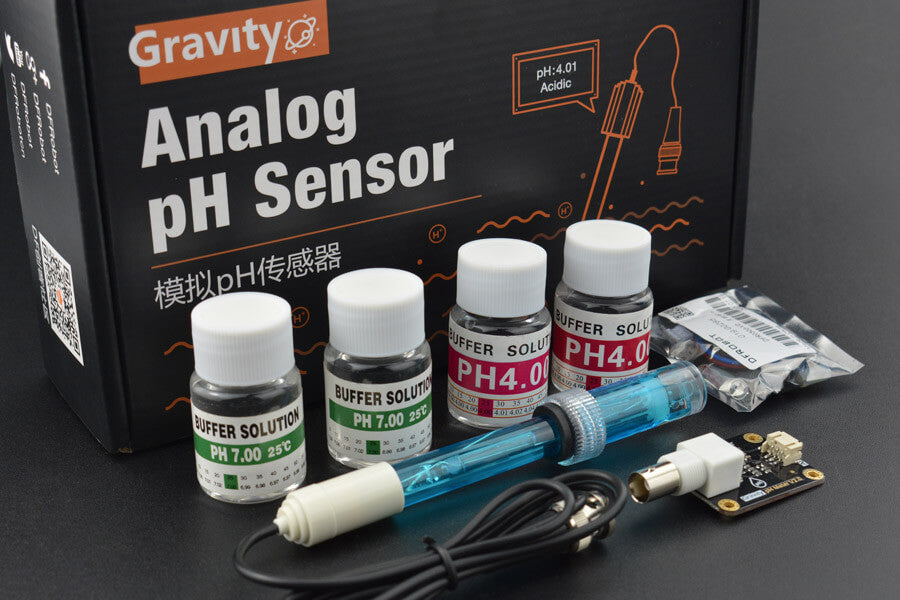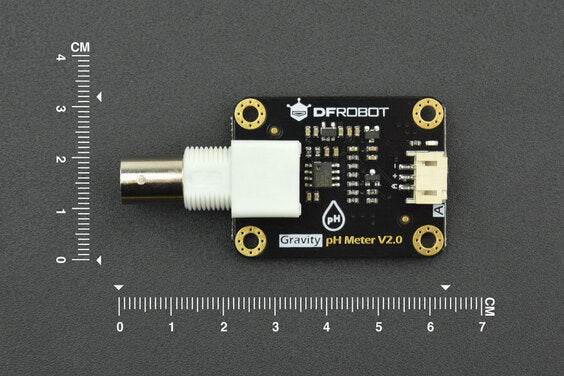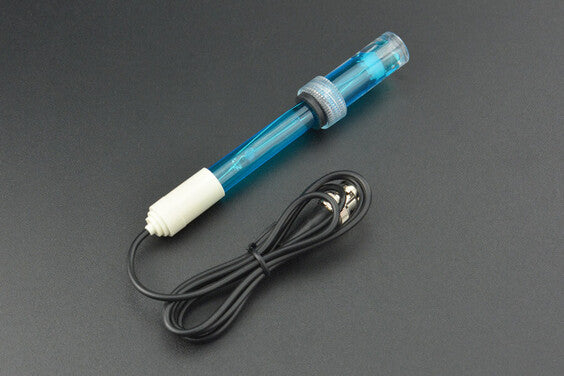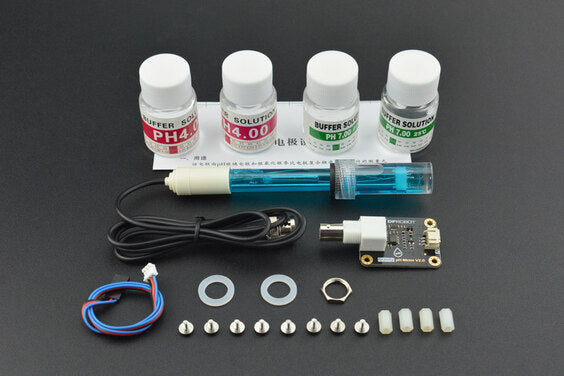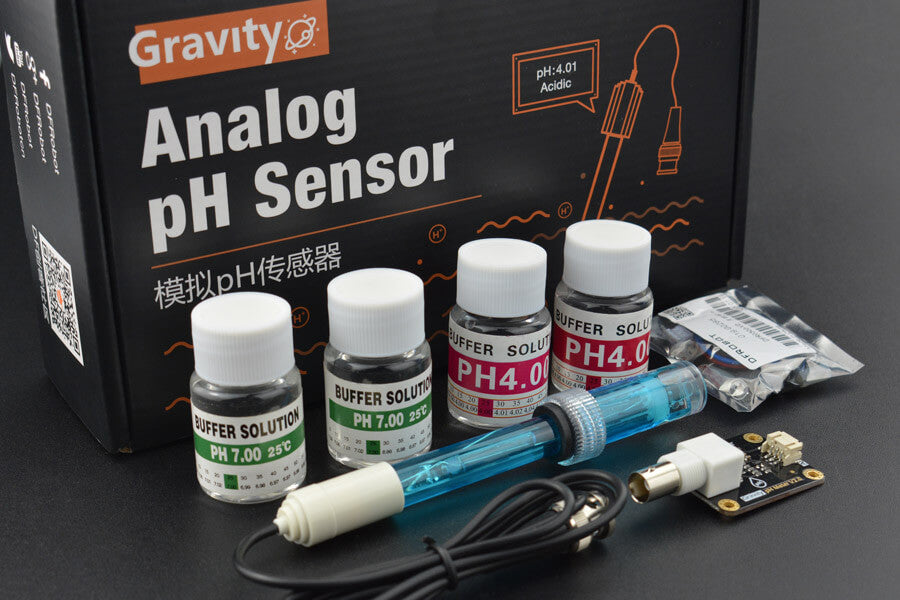
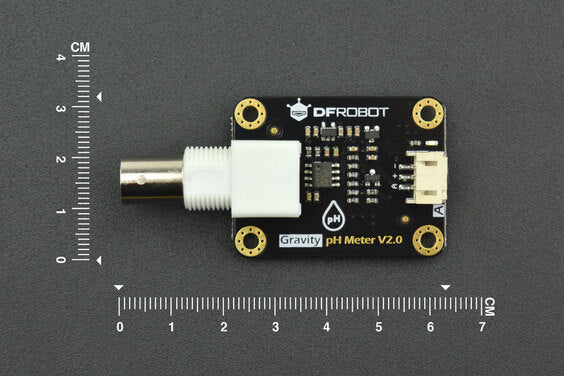
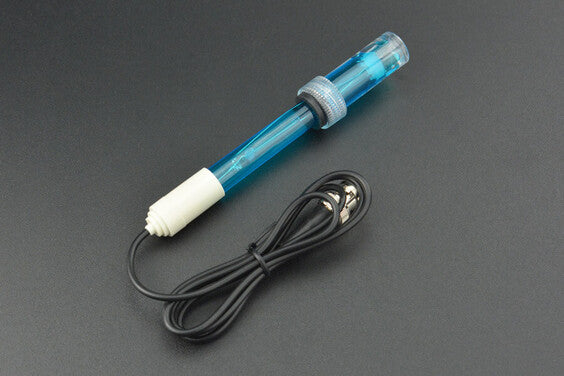
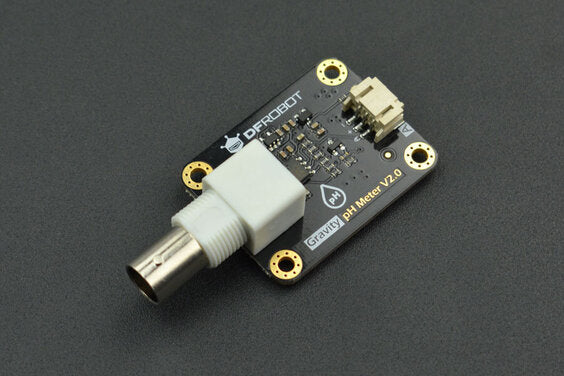
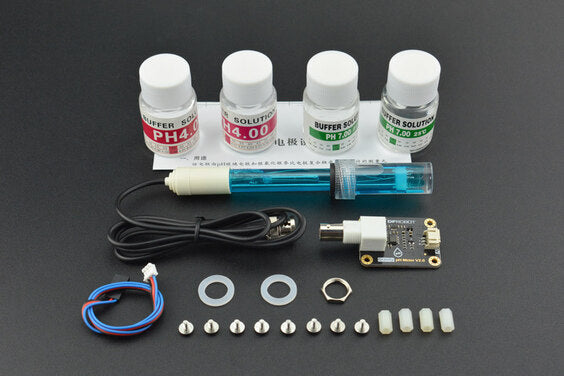
Description
The analog pH meter V2 is specifically designed to measure the pH of the solution and reflect the acidity or alkalinity. The DFRobot PH sensor is commonly used in various applications such as aquaponics, aquaculture, and environmental water testing.
As an upgraded version of pH meter V1, this product greatly improves the precision and user experience. The onboard voltage regulator chip supports a wide voltage supply of 3.3~5.5V, which is compatible with the 5V and 3.3V main control boards. The output signal filtered by hardware has low jitter. The software library adopts the two-point calibration method, and can automatically identify two standard buffer solutions (4.0 and 7.0), making it simple and convenient.
The sensor can be easily connected to most popular microcontrollers (such as Arduino), and with its Arduino library, you can quickly build a pH meter, plug, and play. DFRobot provides a variety of water quality ph analog sensor products, uniform size and interface, not only meeting the needs of various water quality measuring methods but also being suitable for the DIY multi-parameter water quality tester.
The pH is a value that measures the acidity or alkalinity of the solution. It is also called the hydrogen ion concentration index. The pH is a scale of hydrogen ion activity in the solution. pH has a wide range of uses in medicine, chemistry, and agriculture. Usually, the pH is a number between 0 to 14. Under the thermodynamic standard conditions, pH = 7, which means the solution is neutral; pH<7, which means the solution is acidic; and pH > 7, which means the solution is alkaline.
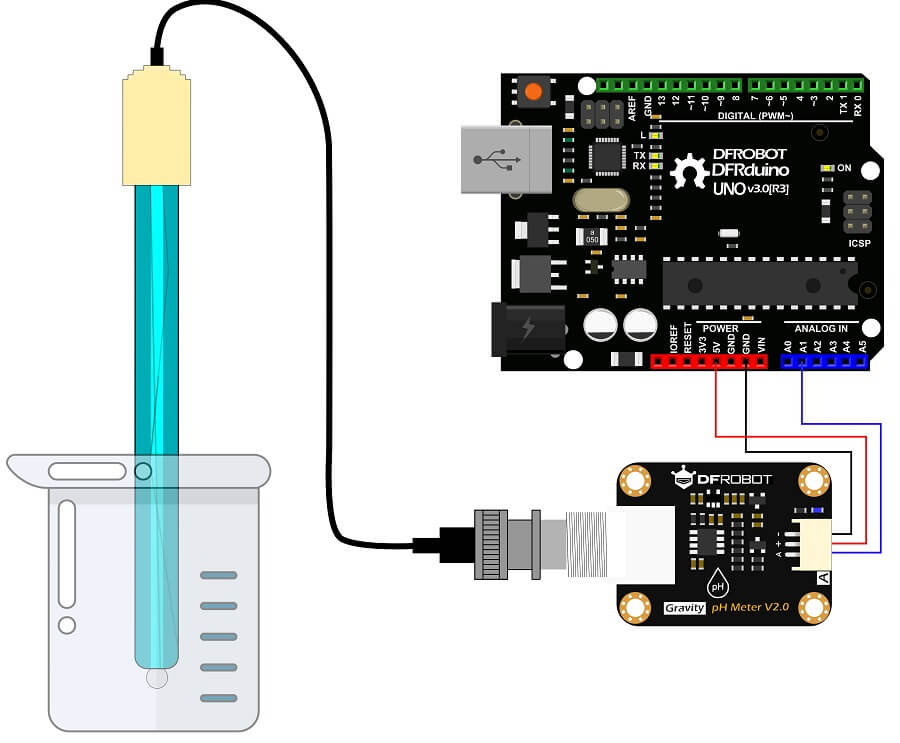
Attention
1. The BNC connector and the signal conversion board must be kept dry and clean, otherwise, it will affect the input impedance, resulting in an inaccurate measurement. If it is damp, it needs to be dried.
2. The signal conversion board cannot be directly placed on a wet or semiconductor surface, otherwise, it will affect the input impedance, resulting in an inaccurate measurement. It is recommended to use the nylon pillar to fix the signal conversion board, and allow a certain distance between the signal conversion board and the surface.
3. The sensitive glass bubble in the head of the pH probe should avoid touching the hard material. Any damage or scratches will cause the electrode to fail.
4. After completing the measurement, disconnect the pH probe from the signal conversion board. The ph analog sensor probe should not be connected to the signal conversion board without the power supply for a long time.
5. The bottle cap of the probe contains protective liquid (3.3mol/L KCL). Even if the bottle cap is screwed tightly, some protective liquid may still leak around the bottle cap, forming white crystals. But as long as there is still protective liquid in the bottle cap, it will not affect the life and accuracy of the probe. So please use it with confidence. It is recommended that the white crystals be poured back into the protective liquid in the bottle cap.
Specifications
Signal Conversion Board (Transmitter) V2
- Supply Voltage: 3.3~5.5V
- Output Voltage: 0~3.0V
- Probe Connector: BNC
- Signal Connector: PH2.0-3P
- Measurement Accuracy: ±0.1@25℃
- Dimension: 42mm*32mm/1.66*1.26in
pH Probe
- Probe Type: Laboratory Grade
- Detection Range: 0~14
- Temperature Range: 5~60°C
- Zero Point: 7±0.5
- Response Time: <2min
- Internal Resistance: <250MΩ
- Probe Life: >0.5 years (depending on the frequency of use)
- Cable Length: 100cm]
Features
- 3.3~5.5V wide voltage input
- Hardware filtered output signal, low jitter
- Gravity connector and BNC connector, plug and play, no welding
- The software library supports two-point calibration and automatically identifies standard buffer solution
- Uniform size and connector, convenient for the design of mechanical structure
PROJECTS
Project 1. Calibrating an Analog pH Sensor (with Linear Algebra)
Introduction: This video is an overview and tutorial for an analog pH sensor that's compatible with both Arduino and Raspberry Pi. It will also give a general overview of linear functions and interpolation. Plus it will show you how to write a custom code to use this sensor on an unsupported platform (Espruino).
Project 2. How to use DFRobot pH Meter module with an ESP32
Project 3. How to measure and indicate the pH of liquids with Arduino and LCD
Introduction: This video will show how to measure the pH of common liquids in our home in an easy and comfortable way, perfect for monitoring the pH of fish, chemicals, etc.
- 1 x pH Probe (Laboratory Grade)
- 1 x pH Signal Conversion Board
- 1 x Gravity Analog Sensor Cable
- 2 x pH Standard Buffer Solution 4.0
- 2 x pH Standard Buffer Solution 7.0
- 2 x Waterproof Gasket
- 1 x Screw Cap for BNC Connector
- 4 x M3 * 10 nylon pillars
- 8 x M3 * 5 screws
